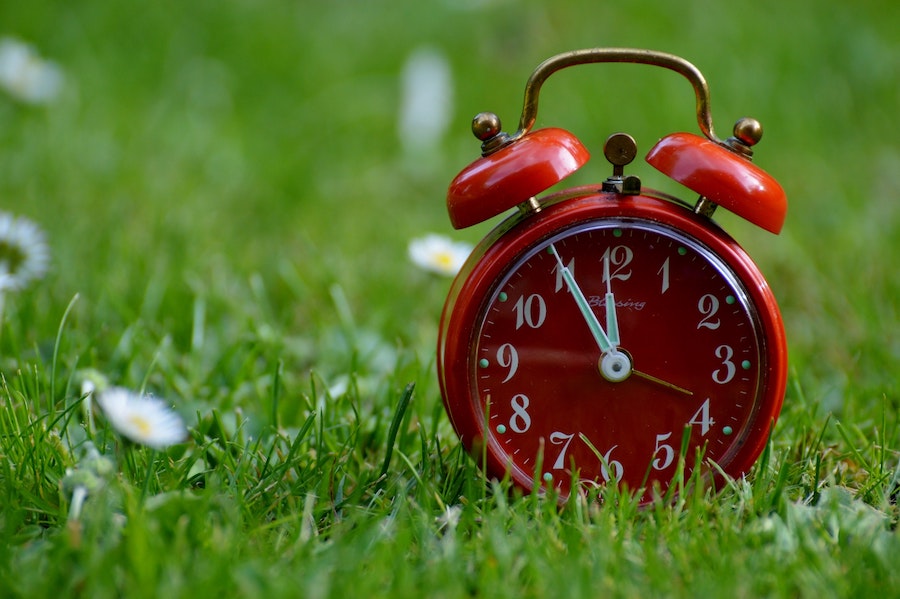
Time to Change the Clocks
Daylight Saving Time begins every year on the second Sunday in March. We “lose” an hour when the clocks are set forward (except in Hawaii and most of Arizona), and for many, that means a tired couple of days as our bodies adjust. The consequences of fatigue can be serious, so plan accordingly.
An ounce of prevention is worth a pound of cure. Below is an excellent spring safety checklist recommended by the National Safety Council (NSC).
Smoke Alarms
According to the National Fire Protection Association, 3 out of every 5 home fire deaths are in homes without smoke alarms. Smoke alarms should be tested monthly and the batteries should be replaced at least once a year. Replace the battery immediately when it starts making a “chirping” sound.
Smoke alarms should be in every bedroom and in the common areas on each floor of a home. To reduce false alarms, mount them at least 10 feet from the stove, less than 12 inches from the ceiling and away from windows, doors and ducts.
Some smoke alarms can be interconnected wirelessly, so when one sounds, they all sound. This is the best way to notify everyone in a home in case of a fire. When purchasing your smoke alarms, be sure they have the label of a reputable testing agency, like Underwriters Laboratories (UL).
Carbon Monoxide Detectors
Carbon monoxide (CO) is an invisible, odorless gas that can kill and it can be emitted by anything that burns fuel. CO alarms should be installed in a central location outside each bedroom and on every level of the home. The safety tips for CO detectors are similar to smoke alarms: change the batteries at least annually, test them monthly and interconnect them if possible. Also, make sure the vents for your gas appliances (fireplace, dryer, stove and furnace) are free and clear of snow or debris.
Family Emergency Plan
The NSC recommends that every family have an emergency plan in place in the event of a natural disaster or other catastrophic event. Spring is a great time to review that plan with family members. Have a home and car emergency kit. The Federal Emergency Management Agency (FEMA) says an emergency kit should include one gallon of water per day for each person, at least a three-day supply of food, flashlight and batteries, first aid kit, filter mask, plastic sheeting and duct tape, and medicines. Visit the FEMA website for a complete list. The emergency plan also should include:
- A communications plan to outline how your family members will contact one another and where to meet if it’s safe to go outside
- A shelter-in-place plan if outside air is contaminated; FEMA recommends sealing windows, doors and air vents with plastic sheeting
- A getaway plan including various routes and destinations in different directions
Also, make sure your first aid kit is updated.
Get Rid of Unwanted Medicines
NSC recommends disposing of unwanted or expired medicines. You could take them to a prescription drop box or take-back event near you, or learn how to use Stericycle Seal & Send envelopes to send them away to be destroyed safely.
Keep your cleaning chemicals out of the reach of children
Getting the urge to clean? With the warm weather comes a desire to shine and polish your home. Disaster can occur when warning labels are ignored or chemicals fall into the wrong hands. Learn how to keep you family safe around poisons in the home.
Window Safety
It’s important to practice window safety, especially in homes with young children. Find more information about window safety.
What protection does my homeowners insurance policy offer?
This spring safety checklist addresses many preventative measures that can greatly reduce the risk of common causes of injury and death in the home. House fires, CO poisoning, tornadoes, overdosing, poisoning and broken glass are all potential perils that could harm you, your family and your guests. Your homeowners insurance policy may help protect you from financial ruin if a catastrophe strikes. With the proper coverage, you can have protection for your home, other structures, personal property, medical payments, liability and more. Review your policy before it renews and use an independent agent to shop around in order to find the best coverage that fits your needs and budget.
An ounce of prevention is worth a pound of cure. However, if you have a disaster, homeowners or renters insurance can help protect you from financial ruin.
How can I buy homeowners or renters insurance in Oklahoma?
There are two easy ways to get a quote or request more information for homeowners or renters insurance in Oklahoma:
- Call/Text (405) 605-9891
- Email jp@schererinsurance.com